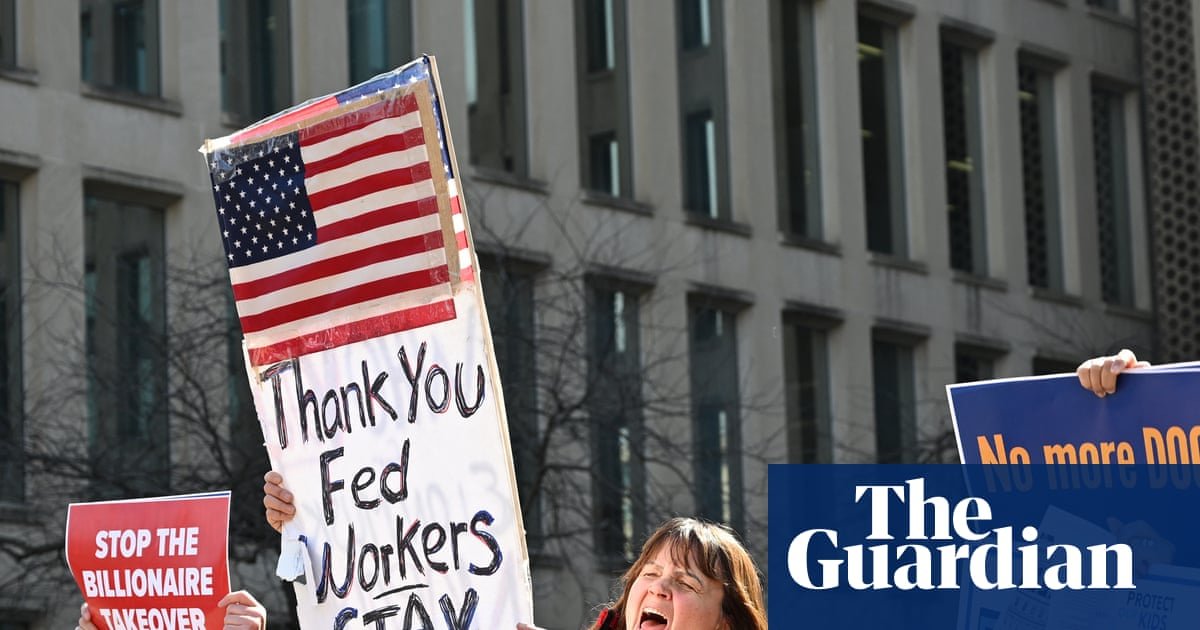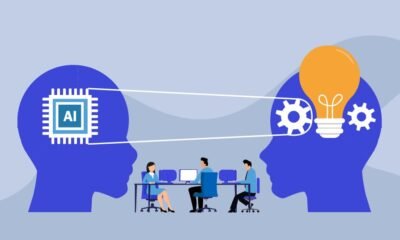Business
AI in business: A powerful tool, but not a substitute for expertise
As award-winning technology lawyers, we embrace innovation. We understand AI. We use it ourselves. But our message to founders and growing businesses is clear: AI is a tool, not a crutch or a substitute. Used correctly, it can support speed, efficiency, and ideation. Used blindly or without oversight, it can lead to expensive litigation, reputational damage, and irreversible strategic missteps. Love or hate AI, it is here to stay, but how you choose to use it will mean everything to you and your business’s future.
In short: AI should be part of your toolbox, but not the only appliance. Also, would you let your apprentice do the job? Without training or supervision, that is what you are doing – which could make a quick job into a costly fix.
We’ve seen it go wrong
As litigation lawyers and legal advisers, we are often called in after things have gone wrong – after the AI-drafted contract is signed, after the dispute arises, after the regulatory breach is discovered.
- Self-drafted contracts pulling in the wrong jurisdiction clause (e.g. New York law governing a UK-based commercial arrangement), leading to unforeseen legal fees to negotiate or litigate the mess.
- AI-generated shareholder agreements that fail to reflect the founders’ actual business strategy, resulting in blocked exits and share dilution.
- Parties entering sensitive client or employee data into public AI tools, only to later face data breach claims. We’ve issued proceedings on behalf of victims in these very scenarios.
- Solicitors and barristers being sanctioned or struck off after using AI to draft legal submissions, unaware that the citations it generated were fictitious. Clients suffer the consequences both financially and reputationally.
These sadly aren’t one-off horror stories. They’re becoming regular features in our work, social media, and news stories – and all could have been avoided with expert legal advice and human oversight.
The problem isn’t AI – it’s an operator error
Let’s be clear: AI is a fantastic tool when operated by those who understand its capabilities and limitations. We use AI ourselves, particularly in research, brainstorming, and data organisation. It can be a time-saver and idea generator. But we never rely on it blindly, we are over-cautious how we use it and what we input, and we triple-check the output.
The challenge is that many users aren’t trained to use AI critically. They assume the output is accurate, without understanding where the data is pulled from, what assumptions are being made, or what legal nuances are missing. They don’t quality-assure what is being used, how it is being processed, and checking the outcome – which any trainee’s work would be. So what’s the difference?
- AI doesn’t understand your business model.
- AI doesn’t know your investors’ risk appetite.
- AI won’t spot a commercial blind spot in your strategy or understand a personal family goal.
- AI doesn’t show empathy when things go wrong and cannot pick up the phone (yet).
It’s not that AI is dangerous, it’s that people are not yet trained or cautious enough to use it wisely.
Hybrid AI use – just like hybrid working
The future is hybrid, in our opinion, and not just in working from home. The same principle applies to technology.
Remote work offers flexibility, saves commuting time, and gives people breathing room. But face-to-face time is still crucial for collaboration, team culture, and mentoring.
- AI should be used the same way: blended, not binary.
- Use it for efficiency, not for decision-making.
- Use it to support, not to replace.
- Keep human judgment in the loop.
We believe the best legal advice comes from a combination of smart tools and experienced people.
Our approach: Technology-driven, people-led
We are technology law specialists and award-winning advisers in the tech sector. We help scaleups, SaaS platforms, AI developers, fintechs, and innovators navigate legal and commercial growth. We understand the tools you use because we use them too. We are not scared of AI like so many would lead you to believe, as it will not replace lawyers. It’s a tool to us – we use it with caution as an aid, but we know our personal experienced advice, with this, works in tandem not in opposition.
We will always choose quality and risk mitigation over shortcuts. Advisors can benefit from AI and costs can be reduced without losing the human oversight.
- Bespoke drafting: We don’t rely on templates. We get to know your business, goals, and risk appetite, and we tailor contracts that fit you. AI can help to administratively feed into this, though, to reduce time.
- Human oversight: Every document, every clause, every risk is reviewed and considered by experienced legal professionals who understand both tech and law. This is not something we believe should be compromised.
- Education, not just execution: We advise clients on how to use AI tools safely, help draft internal AI-use policies, and educate teams on what data is too sensitive to input. Use it sensibly and monitor output, and your business will benefit without the risks.
- Empathy and support: When things go wrong, a chatbot can’t read the room. We’ll pick up the phone or meet you face-to-face, offering clarity, kindness, and practical solutions. AI will one day soon call you and talk – as we are seeing this already – but clarity on human nature, family strains, and risks… an algorithm can’t give the same comfort and one-to-one. So customer service is still essential.
- Litigation expertise: If you’re facing a dispute due to AI misuse, we’re not just theorists. We’re courtroom-ready and have already represented clients in cases involving AI-generated errors, data breaches, and contractual confusion. Make sure your staff understands the policy; make sure you react if your data has been misused on AI – and if you’re unsure about how you’re operating it – check!
We are all embracing AI as part of our growth, but trusted experts make sure you grow safely. Customer service is still much needed. Human touch still goes a very long way.
Business
HubSpot + AI: Why Every Smart Business Needs A Technical Consultant Now

Introduction
Businesses seeking to improve their marketing, sales, and customer service operations are turning to HubSpot as their go-to platform.
AI is also transforming how businesses operate, from automating tasks to providing real-time information and personalizing interactions. To enhance customer communication, AI and HubSpot can collaborate to improve operations and drive sales growth.
One of the issues the companies are facing is that they cannot make this change on their own. By 2024, it is expected that more than 60% of people who use CRM and marketing automation will also use AI. This demonstrates that hiring a skilled technical consultant is no longer an option; it’s a necessity.
In this article, we’ll explore:
- How are the Core functions of HubSpot Changing because of AI?
- Major Problems faced by businesses when implementing advanced features
- Why technical consultants play a key role in successful adoption
- What to look for when hiring the right expert
So the question is, are you ready to unlock HubSpot’s full potential, or risk being left behind?
The Power of HubSpot + AI Integration
HubSpot has fully embraced AI, making marketing, sales, and customer service more creative and effective than ever. The platform now features built-in AI tools, including content assistants that assist in writing better emails and blog posts, as well as predictive lead scoring that helps your team focus on the most important contacts.
In HubSpot, AI can do these things for you:
- Automate Routine Tasks: Chatbots answer frequently asked questions and make reservations, which saves your team hours of work each week.
- Personalize Content at Scale: AI recommends content based on customer behavior, ensuring that every lead receives a message tailored to them.
- Optimize Campaigns Smarter: AI can enhance your campaigns by utilizing built-in analytics and A/B testing tools to refine them.
Growth that can be scaled up and is based on data, without wearing out your team.
Why Businesses Struggle to Maximize These Tools Alone
Even with access to powerful automation and data tools, many businesses struggle to leverage their value fully. Here’s why:
1. Misconfigured Automation:
The tasks may take longer to complete if the automation process is not correctly set up. A lot of confusion and chaos will be created as things might not start on time, or in the worst case, might not start at all.
2. Bad Data Hygiene:
Even the best tools can fail if the data is old or repeated. If you do not keep your data organized, your workflow will not be effective.
3. Tools that are used too much or not enough:
Many teams purchase more than one platform but ultimately use only a small portion of it. They sometimes use a multitude of tools that perform the same function. This makes things messy and less valuable.
4. Skills Gap:
You need to know how to use these tools and think strategically. Many businesses lack the necessary personnel in-house to handle both tasks.
Enter the HubSpot Technical Consultant: What They Do
A Technical HubSpot certified consultant is the person who makes sure that your business goals and complex tech tools work together. They are like translators; they take all the technical stuff and make it work in a way that helps your team do their jobs better, faster, and smarter.
Here’s what they usually handle:
HubSpot Setup and Optimization
They ensure that your CRM is not only set up correctly but also functions the way you and your team do.
AI Feature Implementation and Training
They help you integrate and train your team on AI tools, which enables you to do more with less effort. This includes intelligent chatbots and predictive analytics.
Data Architecture and Reporting
They organize the flow of your data so that everything makes sense and nothing gets lost. This makes your reports clean, clear, and valuable.
Workflow and Automation Troubleshooting
They’re the ones who go in and fix things quickly when they break or slow down.
In short, a Technical Consultant creates complex, yet helpful, technology for businesses by ensuring that every tool you use helps you achieve your goals.
Real-World Benefits of Hiring a HubSpot + AI Consultant
Bringing in a HubSpot + AI consultant isn’t just about staying ahead; it’s about unlocking practical, measurable improvements in your marketing and sales performance. Here’s how:
1. Increased ROI from Campaigns
A consultant helps you leverage data and AI features in HubSpot more effectively. From better audience targeting to predictive lead scoring, every campaign becomes more personalized and effective, without guesswork.
2. Streamlined Customer Journeys
Consultants optimize your workflows to match real customer behavior. The result? Fewer drop-offs, more engagement, and a journey that feels seamless from first click to closed deal.
3. Smarter Use of Analytics and AI
HubSpot’s AI features can be powerful, but only when used correctly. Consultants help you make sense of the insights and turn them into clear action plans that drive growth.
4. Improved Team Productivity
With automation set up correctly, your team spends less time on repetitive tasks and more time closing deals and building relationships.
Success Scenario:
Company A worked with a HubSpot + AI consultant to redesign its lead-nurturing workflows. The result? A 30% boost in MQL-to-SQL conversion within 60 days.
Hiring a consultant is more than a service; it’s a wise investment in scalable success.
When Should You Bring in a Technical Consultant?
While some businesses wait until things break down before calling in a consultant, the most brilliant move is to get one involved early, before your challenges snowball into significant problems. If you’re planning to implement a new CRM setup, automate marketing workflows, integrate third-party platforms, or use AI for the first time, that’s the perfect time to bring in an expert.
Early engagement ensures your systems are designed right from the beginning, saving time and money in the long run. It also gives your team a chance to learn and adapt alongside the setup, rather than scrambling to catch up later.
Still unsure? Here are signs it’s time:
- You’re launching your first AI-driven campaign and need it to go right.
- Your team spends more time fixing workflows than using them.
- Your reports are unclear or inconsistent due to insufficient data.
- You’re unsure which HubSpot tools you’re paying for vs. using.
- Your customer journey feels clunky or disjointed.
Think of a consultant not as an extra cost, but as an investment in avoiding missteps and getting faster, smarter outcomes. The sooner they’re involved, the greater the payoff.
Choosing the Right Technical Consultant
Finding the right technical consultant can make or break your HubSpot or AI integration project. Here’s what to look for:
What to Look For:
HubSpot Certifications: Ensure they are officially certified; this demonstrates their in-depth knowledge of the platform.
Experience with AI Tools: Look for someone who’s worked with automation, integrations, and tools like chatbots or predictive analytics.
Industry Understanding: A consultant familiar with your field can offer more relevant solutions and faster results.
Strategic + Technical Mindset: The best consultants don’t just “do the tech”; they help you think through the why and how behind it.
Red Flags to Watch Out For:
Big Promises, No Plan: Be cautious of anyone who claims they can automate everything without discussing strategy or goals.
Poor Communication or Documentation: If they can’t explain what they’re doing or leave no records, that’s a red flag.
Agency vs. Freelancer vs. In-House:
Agencies offer scale, freelancers bring flexibility, and in-house hires give long-term support. Select the option that best fits your goals and budget.
Business
How AI is Shaping the Future of Cybersecurity for Business in 2025

As increasingly more businesses rely on cloud infrastructures, the alignment of cybersecurity for business and cloud network protection has never been greater. Business enterprises face a new era of threats: artificial-intelligence-fortified threats, exploits designed specifically for clouds, and highly evolved ransomware campaigns initiated in 2025.
Staying abreast of these trends and strategies of adaptive defense is paramount when it comes to protecting information, business continuity, and customer trust.
1. Emergence of AI-Driven Ransomware
Recent research revealed what is possibly the first-ever AI-driven ransomware called PromptLock. It deploys locally maintained large language models to create hostile Lua scripts and can possibly attack Windows, Linux, and macOS operating systems with highly developed encryption and cross-platform functionalities.
At the same time, more extensive research verifies that online criminals are utilizing generative AI software such as Anthropic’s Claude to implement automation of each step of ransomware use, starting from generating malware and up to writing ransom claims.
Why it is important for cloud network security: Technical requirements for complex attacks are lowered by AI. Resource access-automated cloud environments are ideal targets for quick customized ransomware that ignores conventional protection methods.
2. Cloud Computing Providers Faced with Threats
Security analysts discovered that the threat actor known as the Murky Panda has been using cloud service provider zero-days against their target infrastructures. These attack tools possess lateral movement within networks and have a tendency of bypassing common detection technologies.
Business takeaway: Even cloud infrastructure run by major players can be breached. Good security starts with making sure your provider implements stringent patching, visibility, and segmentation.
3. Automated AI-Enabled Threats on the
Cyberattacks are now exceedingly common thanks to automation facilitated by artificial intelligence,Cybersecurity Ventures’ latest report found automated scanning peaked at 36,000 scans per second worldwide and triggered a whopping surge of credential-based breaches and stolen credentials available on the dark web.
Implication: Both cloud and non-cloud networks must integrate real-time defenses like AI-powered threat detection, Zero Trust, and behavioral analytics so that threat detection can occur before damages are being caused.
4. Best Practices in Cloud Network Security
a. AI-Infused Threat Defense Platforms
Modern cloud network security employs AI to identify anomalies and respond within a flash:
- More and more businesses use real-time machine learning to follow cloud behaviors, spot possible risks early on, and react before they take place.
- State-of-the-art protection even catches ransomware at real-time with detection rates higher than 96%.
b. Zero Trust Architecture
Trust nothing by default ever. Zero Trust involves verification of end-users, devices, and access rights on a constant basis before each request. For cloud networks this means deploying identity verification, validation of device compliance, and least-privilege configurations.
c. Governance & Shadow AI Mitigation
With rapid business uptake of AI technologies, Shadow AI or unregulated, employee- operated AI is a real security risk. Data and AI use need governance and monitoring policies to remain within control.
d. Attack Path and Continuous Exposure Management
Cloud infrastructure tends to have misconfigurations and vulnerabilities that go unpatched. Continuously Exposure Management (CEM) platforms enable you to map attack paths within hybrid environments and remediate based on real-world danger.
5. Strategic Framework for Secure Cloud Networks
To stay one step ahead, businesses need a multi-leveled forward-thinking approach:
Employ scanner and real-time monitoring with AI-powered software that identify oddities and respond in real time.
Extend Zero Trust to human-cloud interactions: use micro-level access controls and verify identities at all locations.
Emphasize vulnerability reduction using CEM tools to focus on those vulnerabilities that are of highest concern within business operations.
Set clear AI policies not to unofficially use shadow AI software and protect all-around.
Back up rigorously, in immutable, tested ways, to maintain resilience against AI-enhanced ransomware.
Conclusion
In short, cloud network security from cybersecurity for business requires agility, next-gen detection, and architectural rigor. Since AI-led threats and ransomware are increasingly autonomous and specificity-driven, the use of antiquated perimeter defenses is no longer tenable. Companies need to move forward with AI-supported security, Zero Trust, visibility, and robust governance.
Secure Your Cloud Future with ELLIMANTECH
Looking to fortify cloud network security and remain one step ahead of emerging threats? ELLIMANTECH delivers customized cybersecurity protection developed to suit modern business needs: AI-driven threat identification and incident management, Zero Trust network implementations continuing surveillance and control of exposure, Reliable cloud backup, and disaster recovery.
Protect your business with security designed for today, and tomorrow. Take a look at https://ellimantech.com and get started.
Business
‘He’s brazenly anti-worker’: US marks the first Labor Day under Trump 2.0 | Trump administration

For this Labor Day, the Donald Trump administration has draped an enormous banner outside the US labor department with his portrait and the words “American Workers First.”
Trump was elected on promises, since repeatedly pledged, that he would fight for workers and forgotten Americans. But many labor advocates say that Trump has consistently put corporate interests first in his second term as he has taken dozens of actions that hurt workers, often by cutting their pay or making their jobs more dangerous.
Despite his vow to help coal miners, Trump halted enforcement of a regulation that protects miners from a debilitating, often deadly lung disease. He fired the chair of the National Labor Relations Board (NLRB), leaving the US’s top labor watchdog without a quorum to protect workers from corporations’ illegal anti-union tactics. Angering labor leaders, Trump stripped one million federal workers of their right to bargain collectively and tore up their union contracts.
“It’s a big betrayal,” Liz Shuler, president of the AFL-CIO, the main US labor federation, said. “We knew it would be bad, but we had no idea how rapidly he would be doing these things. He is stripping away regulations that protect workers. His attacks on unions are coming fast and furious. He talks a good game of being for working people, but he’s doing the absolute opposite.”
“This is a government that is by, and for, the CEOs and billionaires,” Shuler added.
Trump has hurt construction workers by shutting down major wind turbine projects and ending Biden-era subsidies that encourage the construction of factories that make renewable-energy products. In moves that will harm some of the nation’s most vulnerable workers, the Trump administration has proposed ending minimum wage and overtime protections for 3.7 million home-care and domestic workers. It has also killed a Biden plan to prevent employers from paying disabled workers less than the $7.25-an-hour federal minimum wage.
“There is a huge disconnect between Trump’s pro-worker rhetoric and the policies he’s putting in place. The gulf is enormous,” said Heidi Shierholz, president of the Economic Policy Institute, a progressive thinktank. “In his second term, he’s been absolutely, brazenly anti-worker.”
“I keep thinking about his taking away the Biden-era increase in the minimum wage for federal contractors. It’s unbelievably brazen,” Shierholz continued. (Trump ended the requirement that federal contractors pay their workers at least $17.75 an hour.) “The minimum wage is incredibly popular. He just took away the minimum wage from hundreds of thousands of workers. That blew my mind.” As a result, many full-time workers will see their pay drop by more than $9,200 a year.
The administration disputes all these criticisms. “The American worker has been left behind by the Democrat party for years, but President Trump has championed an agenda that puts the American worker first,” said Taylor Rogers, White House assistant press secretary.
Trump has “unleashed an economic boom”, she said. Inflation is cooling, native-born Americans are benefiting from private-sector job gains and blue-collar wages are rising fast. “Under President Trump’s leadership, Republicans are once again the party of the American worker,” said Rogers.
Many labor experts say Trump is even more anti-union than Ronald Reagan, often called the most anti-union president of modern times. Reagan fired 11,345 air traffic controllers who went on strike, but the AFL-CIO’s Shuler said that “pales in comparison” to Trump’s ending collective bargaining for 1 million federal workers. “That’s the largest single act of union-busting in our history,” she said.
“He is worse than Reagan when it comes to his approach to unions,” said Julie Su, who was acting labor secretary under Biden. “We saw what Reagan did in the 1980s. That began a long decline in unionization. This president wants to make America non-union again. He’s certainly trying to make the government non-union again.”
Shierholz said the “absolute scale of crushing unions” under Trump is “on a whole different scale from what we saw under Reagan. Trump is saying it’s absolutely open season on union folks. He took an absolute chainsaw to the federal workforce. He’s giving the green light to the private sector and local government to do the same.”
Justin Chen, president of an American Federation of Government Employees council representing 8,000 Environmental Protection Agency (EPA) workers across the US, is angry that Trump halted collective bargaining for EPA employees, voided most of their union contracts and fired probationary workers. “Whatever he said about fighting for workers was a complete lie,” Chen said. “He treats federal employees with a great deal of disdain, not as civil servants valuable to make our government and economy run.”
Many labor advocates say Trump’s signature policies, including tariffs and deportations, are hurting US workers. Trump’s tariffs are pushing up prices and slowing economic growth, economists say. Trump’s “big, beautiful” tax cut will harm millions of working families by cutting food assistance and causing many to lose health coverage. As for Trump’s deportation campaign, many workers say it’s undermining their employers’ businesses and forcing them to work harder because they have to do the work of their departed co-workers.
In her annual State of the Unions address, AFL-CIO president Shuler said on Wednesday: “The state of working people in this country is they’re under attack.” She added: “We want cheaper groceries, and we get tanks on our streets. We want more affordable healthcare, and we get 16 million Americans about to be kicked off their coverage.” Shuler said unions will hold close to 1,000 rallies and other events this Labor Day across the US to kick off a year of mobilization.
Jenny Smith, a home-care worker in Champaign, Illinois, said Trump’s plan to end overtime and minimum-wage protections for home-care workers shows contempt for struggling, low-wage workers. “Trump doesn’t know what it means to go to work day after day to earn a living,” she said. “If you take away these wage protections, it will take money out of these workers’ pockets. The majority of these workers are Black, brown and single mothers. You’re taking from their children’s mouths.”
Smith voiced dismay that Trump hasn’t made good on his promise to reduce prices. “I’m very disappointed that prices aren’t going down,” she said. “I just bought a dozen eggs for $6.”
She added: “I don’t think he cares about us, but he does care about the billionaires.”
Trump has taken numerous steps that will weaken safety protections for workers. He is cutting staffing by 12% at the Occupational Safety and Health Administration (Osha). His administration has proposed eliminating a requirement for adequate lighting on construction sites. It is reducing the fines that small businesses pay for violating safety rules. It has proposed blocking the government’s mine-safety district managers from ordering upgrades in mine ventilation and safety. It has slowed action on Biden’s effort to protect workers from high temperatures.
Trump also froze enforcement of a Biden-era regulation that protects miners from silicosis, a serious lung disease.
“Silicosis has become a major killer among coal miners, but the Trump administration is trying to make silicosis great again,” said David Michaels, a professor of public health at George Washington University who headed Osha under Barack Obama. “The Trump administration has taken several steps that are devastating to the safety and health of the nation’s workers. Osha, which is under-resourced and underpowered, has become significantly smaller as a result of the Trump and Doge [Trump’s unofficial ‘department of government efficiency’] cuts.”
Michaels warned that Trump’s cuts to Osha penalties will reduce incentives for companies to ensure safe conditions.
Administration officials point to the Trump-backed “no tax on tips” and “no tax on overtime” as clearly pro-worker. But Yale’s Budget Lab notes that only 4% of workers in the bottom half by income are in tipped jobs, while almost 40% of tipped workers earn so little they don’t pay federal income taxes.
Moreover, the no-tax-on-overtime provision will reduce income taxes far less than most workers realize. The deduction applies only to the “half” in “time-and-a-half” overtime pay. If a worker earns $20 an hour and their overtime rate is $30, that worker can deduct only the $10 premium for each overtime hour, not the full $30.
Shierholz said that if Trump were serious about helping workers, “he would raise the minimum wage, make overtime pay double pay and do away with the sub-minimum wage for tipped workers. That would truly help workers, but that’s not what he’s doing. He’s doing as little as possible to help workers, while helping employers.”
While Trump says his deportations will create job opportunities for US-born workers, Shierholz’s economic institute forecasts that Trump’s effort to deport 1 million immigrants a year will result in 5.9m lost jobs after four years: 3.3 million fewer employed immigrants and 2.6 million fewer employed US-born workers. “If you don’t have immigrant roofers and framers, you’re not building houses, and that means electricians and plumbers lose their jobs,” Shierholz said. “Plus, you lose the consumer spending from those workers.”
Corey Mahoney, a 35-year-old cargo handler at John F Kennedy international airport in New York, said Trump’s policies have whipsawed workers at his warehouse. “The tariff situation has slowed down work, and many people lost their jobs,” he said. When Trump ended protected status for many Venezuelans and other immigrants, some of his Venezuelan co-workers left or were deported. “Some of the people I was working with tried to come to work, but they weren’t allowed,” he said. “We were left with less people, and we had to work twice as hard. It’s unfair.”
“Trump is in an alternative universe thinking everything is good,” Mahoney said. “He doesn’t realize that normal people who are just trying to make a living aren’t happy with what he’s doing.”
-

 Business3 days ago
Business3 days agoThe Guardian view on Trump and the Fed: independence is no substitute for accountability | Editorial
-
Tools & Platforms3 weeks ago
Building Trust in Military AI Starts with Opening the Black Box – War on the Rocks
-

 Ethics & Policy1 month ago
Ethics & Policy1 month agoSDAIA Supports Saudi Arabia’s Leadership in Shaping Global AI Ethics, Policy, and Research – وكالة الأنباء السعودية
-

 Events & Conferences3 months ago
Events & Conferences3 months agoJourney to 1000 models: Scaling Instagram’s recommendation system
-

 Jobs & Careers2 months ago
Jobs & Careers2 months agoMumbai-based Perplexity Alternative Has 60k+ Users Without Funding
-

 Funding & Business2 months ago
Funding & Business2 months agoKayak and Expedia race to build AI travel agents that turn social posts into itineraries
-

 Education2 months ago
Education2 months agoVEX Robotics launches AI-powered classroom robotics system
-

 Podcasts & Talks2 months ago
Podcasts & Talks2 months agoHappy 4th of July! 🎆 Made with Veo 3 in Gemini
-

 Podcasts & Talks2 months ago
Podcasts & Talks2 months agoOpenAI 🤝 @teamganassi
-

 Mergers & Acquisitions2 months ago
Mergers & Acquisitions2 months agoDonald Trump suggests US government review subsidies to Elon Musk’s companies





















